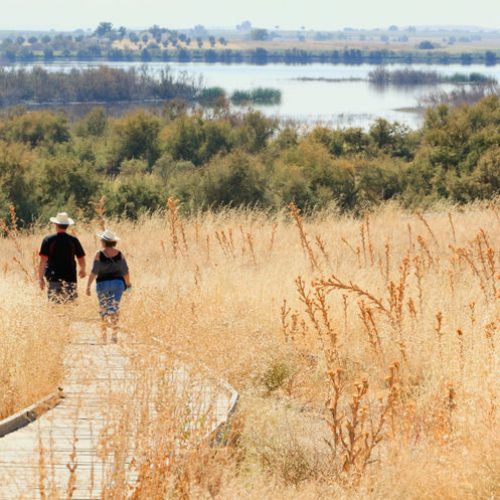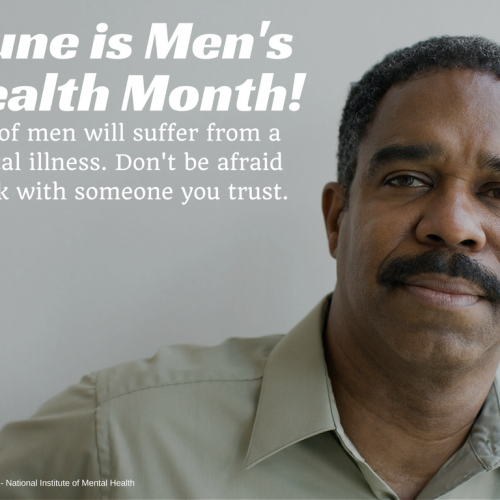BY 9:30 a.m., the early crowd at Metro Fitness in Montgomery, Ala., has thinned. Those who must be at work are gone. Those who remain are generally retirees. At that time, every Monday, Wednesday and Friday, 15 to 20 of them gather in the club’s first-floor studio for a class called Fitness Fusion.
“It’s a predominantly 60 and over, female crowd,” said Leigh Anne Richards, the teacher and general manager of the club.
Ms. Richards begins the hourlong class with a 10-minute warm-up of stretches and low-impact dance movements. She then has the group walk briskly out of the studio and up a flight of stairs to the club’s 13-laps-to-a-mile indoor track. After 20 minutes of jogging — sometimes in a relay race — the group returns to the studio for about 25 minutes of strength training, using body-weight exercises like situps. Movements intended to improve balance are included.
“We’ll do a biceps curl while standing on one leg or something like that,” she said.
Gentle stretching concludes the class.
Voilà! Do that three times a week, throw in a brisk walk on the weekend, and these women will have met the Department of Health and Human Service’s guidelines for physical activity, which, when they were introduced in 2008, included specific recommendations for older people.
The guidelines encourage all Americans to engage in some sort of physical activity. For optimal health, they recommend a total of 150 minutes of moderate-intensity aerobic activity a week, or 75 minutes total of vigorous activity. For additional health benefits, 300 minutes a week of moderate aerobic activity is recommended, or 150 minutes a week of vigorous aerobic activity.
The department also suggests that older people especially perform two sessions of muscle- and bone-building resistance training a week. Balance exercises three times a week to prevent falls are recommended for those 65 and older.
That may seem like a lot of exercise, particularly for people whose idea of serious physical activity is getting up from the sofa.
“If you’re sedentary and you start doing everything the guidelines recommend, that’s a big change in lifestyle,” said Dr. Michael Rogers, an exercise physiologist and director of the Center for Physical Activity and Aging at Wichita State University in Wichita, Kan. “We were interested in looking at how we can make that transition a little easier.”
He suggested what he called simultaneous or concurrent exercise, which is any activity that combines strength-building and cardiovascular, or aerobic, exercise, and maybe even balance training, in one movement.
Over the last 15 months, he and a Wichita State colleague, Dr. Jeremy Patterson, an exercise physiologist, have studied whether such activities can help older people, generally those 55 and older, maintain an exercise routine. They have used a treadmill with a moving console that allows people to set resistance, so they can get the aerobic benefits of brisk walking, while testing muscles, through pushing and pulling on the console while maintaining their balance.
That movement — with the arms doing one thing and the legs doing another, while the person tries to stand straight on a moving belt — might seem daunting, but the older people in Dr. Rogers’s labs seem to have gotten the hang of it.
“Once you get the rhythm down, it seems natural,” said Mitch Murray, 60, a retired Kansas state employee and one of roughly 20 subjects (aged 58 through 72) in the Rogers-Patterson study. They said they hoped to submit the results for publication this summer.
Mr. Murray said he had lowered his blood pressure and improved his strength and musculature since starting concurrent exercise. “I feel firm and toned, and all that good stuff,” he said.
While the push-pull treadmills used at the center are not widely available at commercial health clubs, Dr. Rogers said there were other, simple ways to perform concurrent exercise movements.
He cited Nordic walking, in which poles are used to push off while walking. This, too, challenges the upper body, while it is performing an aerobic exercise, walking. According to the American College of Sports Medicine, studies have shown that Nordic walking increases energy expenditure by 15 to 20 percent over walking without poles, mostly because of the increased upper-body activity. Dr. Rogers hopes to find similar results with his subjects on the resistance treadmill.
Still, some are not convinced that such an all-in-one-approach will increase activity among older people.
“As a public health recommendation, do we want every older adult in America to go out and buy ski poles?” asked Dr. Wojtek J. Chodzko-Zajko, a kinesiologist at the University of Illinois at Urbana-Champaign.
“No, we want them to just start walking, to start doing something. If they can use the poles and get the benefits, great. And if people want to walk on a treadmill that can be adapted to get some resistance training, is there anything wrong with that? Absolutely not. But from a public health perspective it’s not likely to substantively increase exercise adherence in the under-exercising senior population.”
Older people can get the recommended weekly amount of physical activity in other ways. Classes like Fitness Fusion that combine various kinds of exercise, geared for older people, can be found in most health clubs. Or older adults can simply walk for 30 minutes, and then do calisthenics — including standing on one leg — and achieve most of the aerobic, strengthening and balance-promoting activities the guidelines suggest, in one workout.
Dr. Rogers warned against walking with a pair of dumbbells. Although the activity combines strength and cardio exercise, he noted that it was harder to break a fall while holding weights — an important consideration for older people.
Others say not to worry about the list of recommended exercises, at least initially, and just start moving. “Don’t think you have to do all these things right away,” said Dr. Hank Williford, a specialist in fitness for older adults at Auburn University at Montgomery in Alabama. “The important thing is to be active.”
Some specialists contend the real problem is not the ambitious-sounding guidelines, but perceived barriers to exercise. That may explain why, according to the Centers for Disease Control and Prevention, only about 22 percent of older people engage in any regular physical activity.
“I’m too old to start,” is one of the most common reasons they give for not exercising. “That is absolutely not true,” said Dr. Chhanda Dutta, a gerontologist with the National Institute on Aging. “The fact is you do yourself more harm by leading a sedentary lifestyle.”
Visit http://www.health.gov/paguidelines/ to read more about the federal Physical Activity Guidelines, including those for older adults.
Got to http://go4life.nia.nih.gov/ for more on how to get started on a well-rounded physical activity program for seniors.
Source: The New York Times
March 12, 2013
By John Hanc, photo by Craig Hacker for The New York Times
http://www.nytimes.com/2013/03/13/business/retirementspecial/exercise-programs-for-older-adults-combine-aerobics-strength-and-balance.html?pagewanted=all











